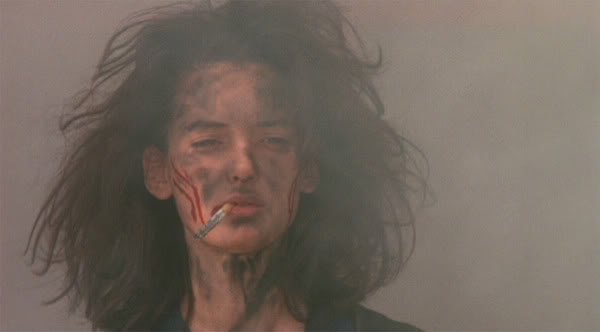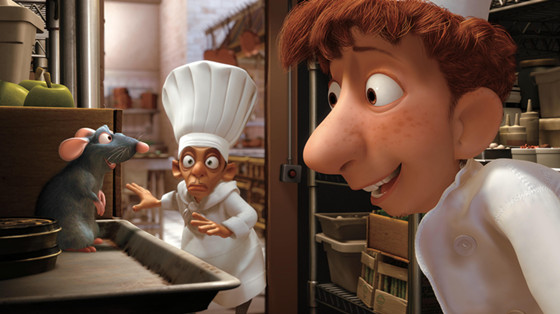6. Heathers

The controversy surrounding this black comedy is no secret. Even today, Heathers is arguably an acquired taste, courtesy of its unflinching screenplay. Suicide being treated as a hot topic and not a national crisis is evident here. It’s media sensationalism. What else is new? That allows Heathers to remain relevant.
While it’s still accessible, the varying relationship dynamics should also be looked into. Why are there social standards within a family, instead of unconditional love? Three of the four main female characters are named Heather. The acknowledgment of Veronica’s individuality is obvious, but what about the trend chasing by all of the other students not named Heather? J.D. is not a Heather, and he’s technically the main trend setter of the film.
The idea of Heathers being the go-to’s for inspiration, and their complete lack of involvement with the actual morbid fashion statements in the film is evidence that media sensationalism not only exists: the wrong sources are usually accredited, and no one can care less.
7. Lady Bird

The most recent example here, Lady Bird feels right to include because of the clashing receptions it received: overrated (because of its critical acclaim), and underrated (after its slowed-down awards season). The maturation narrative is the focal point; the titular character rebels against all systems in her final year of high school.
One thing that sticks out is the speed of the film’s pacing. Are these memories being stitched together (the vital moments in Lady Bird’s senior year)? Are these the lingering thoughts of a hurt mother trying to hang on to her daughter? The speed is important, because so much was done in such little time. Life is funny that way: it feels never ending, and yet so much of it is taken advantage of. All that remains is the past to reflect on.
8. Ratatouille

This underrated Pixar gem loves to relish in its cooking storyline, especially through the eyes of Remy the rat. However, Anton Ego (with a very appropriate name) plays a very important role, here. His monologue about criticism is not for any slight reason. Think about it. The entire film is about cooking, yes: the conjuring of a craft. It’s also about any art form. That may be obvious; the creation of anything can be critiqued.
What may be missed here, is the film’s relation not to the artist, but to the critic. Remy checks in on Linguini’s food and fixes it. His food is then judged by many others. This is not a separation of the artist and the critic, but a union.
Art is the semblance of instinct and sensibility, and all players not interested in both together either get expunged (Skinner, who only sees the corporate side of the cooking industry), or get invited to mix both worlds (Ego). Ratatouille is all about mixing tastes and ideas together, and it’s not just about the ingredients that can coexist.
9. The Secret of NIMH

One major reason why the sequel to this dark animated film failed, was because it was missing the steep depth this original flick had. Despite the fact that this film was based on a source material (by author Robert C. O’Brien), it’s no coincidence that it was the first film director Don Bluth made after his schism from Disney as an animator. Bluth tried to show this film to Disney, but kept getting turned down.
The importance of this story only grew stronger: a mouse fighting against a greater, unstoppable force. In the film, it’s human testing (linked to the experimentation on animals a means of understanding mental illnesses). That already has its own share of depth: it isn’t just about the animals being unfairly worked on, but the stigmas surrounding mental illnesses that were being bastardized by corporations wishing to profit off of them.
Then, there is the fight of the underdog (or, rat) versus the big machine. Bluth was obviously trying to get Disney to work on this film, but it makes sense that these themes resonated even more once this was his way of proving Disney wrong (and rebelling against the animation corporate entity).
10. When Harry Met Sally

What makes When Harry Met Sally stick out amongst many of its peers (in the romantic comedy genre), is its ability to not focus on a romance, but on the longing of two people refusing to commit to a full relationship. What makes this film continue to shine is the possibly overlooked use of intercut testimonials (married couples remarking on how they met) contrasting with the many scenes of the film.
We finish the film with an older Harry and Sally discussing how their love blossomed, so that link makes sense. However, the actual correlation to these scenes that these “interviews” have should not be forgotten. For every pause in the film we have to hear these stories, we see missed opportunities between the two leads of the film.
The film’s title holds weight, because there are multiple answers to this (they met in the first scene, they fell in love at another time, they officially sealed the deal another time, they got repulsed by one another a separate time, and etc.).
It’s a series of instances where they got familiar with each other. It wasn’t too late that they finally accepted fate, but these are the series of many botched opportunities, placed between the world moving on around them and falling in love much.